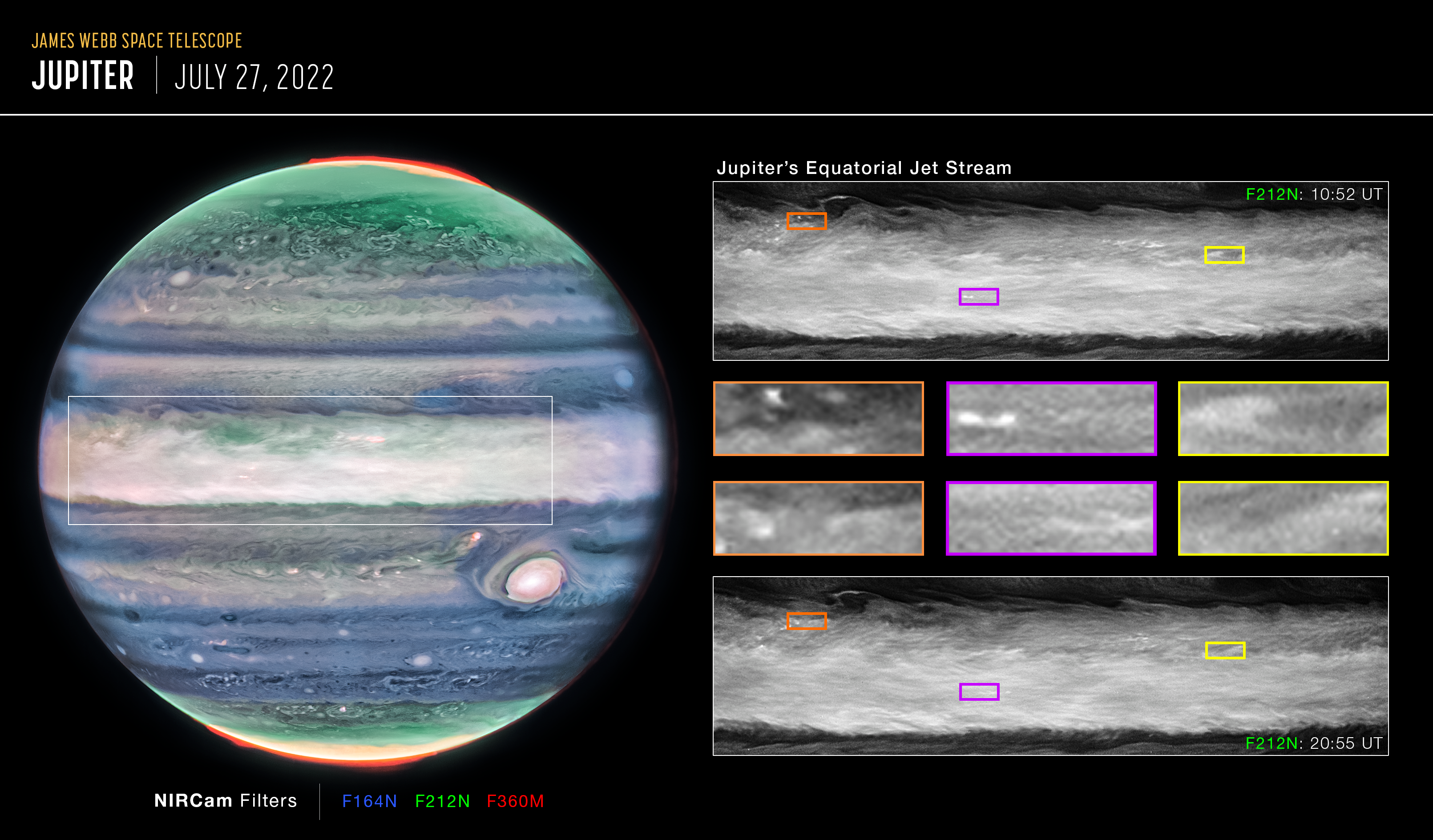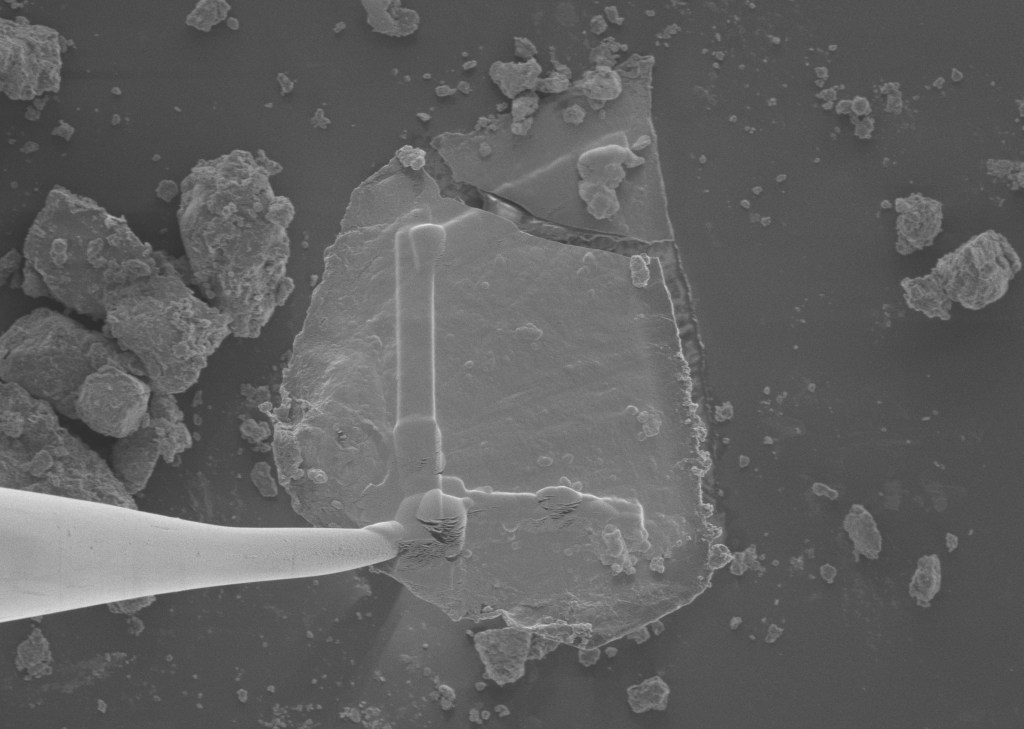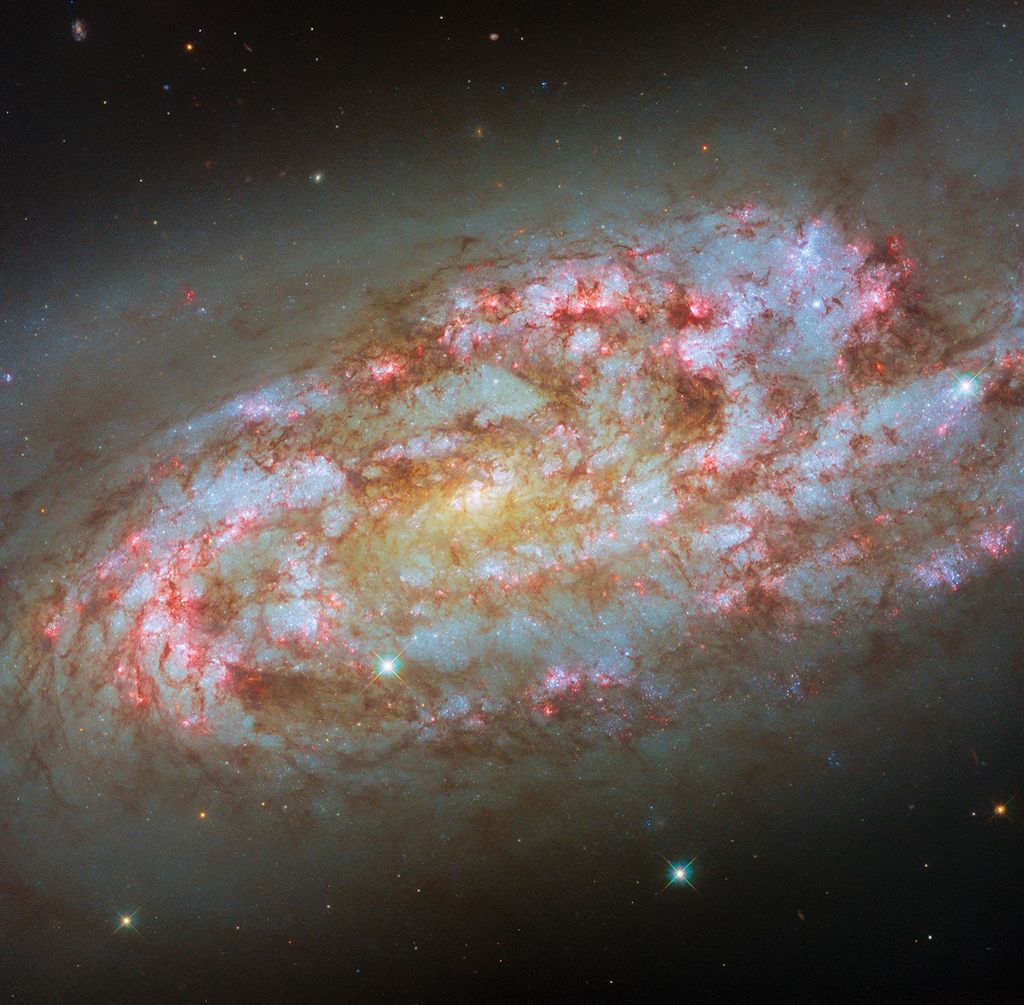1 min read
Jupiter Jet Pullouts (NIRCam Image)

Researchers using NASA’s James Webb Space Telescope’s NIRCam (Near-Infrared Camera) have discovered a high-speed jet stream sitting over Jupiter’s equator, above the main cloud decks. At a wavelength of 2.12 microns, which observes between altitudes of about 12-21 miles (20-35 kilometers) above Jupiter’s cloud tops, researchers spotted several wind shears, or areas where wind speeds change with height or with distance, which enabled them to track the jet. This image highlights several of the features around Jupiter’s equatorial zone that, between one rotation of the planet (10 hours), are very clearly disturbed by the motion of the jet stream.
About the Object
- DistanceDistanceThe physical distance from Earth to the astronomical object. Distances within our solar system are usually measured in Astronomical Units (AU). Distances between stars are usually measured in light-years. Interstellar distances can also be measured in parsecs.On July 27th, 2022 Jupiter was 4.44 AU from Earth (about 413 million miles).
About the Data
- Data DescriptionData DescriptionProposal: A description of the observations, their scientific justification, and the links to the data available in the science archive.
Science Team: The astronomers who planned the observations and analyzed the data. "PI" refers to the Principal Investigator.This image was created with Webb data from proposal: 1373 (I. de Pater). Image Processing: Joseph DePasquale (STScI)
- InstrumentInstrumentThe science instrument used to produce the data.NIRCam
- Exposure DatesExposure DatesThe date(s) that the telescope made its observations and the total exposure time.27 July 2022
- FiltersFiltersThe camera filters that were used in the science observations.F164N, F212N, F360M
- Object NameObject NameA name or catalog number that astronomers use to identify an astronomical object.Jupiter
- Object DescriptionObject DescriptionThe type of astronomical object.Planet
- Release DateOctober 19, 2023
- Science ReleaseNASA’s Webb Discovers New Feature in Jupiter’s Atmosphere
- CreditImage: NASA, ESA, CSA, STScI, Ricardo Hueso (UPV), Imke de Pater (UC Berkeley), Thierry Fouchet (Observatory of Paris), Leigh Fletcher (University of Leicester), Michael Wong (UC Berkeley), Joseph DePasquale (STScI)

These images are a composite of separate exposures acquired by the James Webb Space Telescope using the NIRCam instrument. Three filters were used to sample narrow wavelength ranges. The color results from assigning different hues (colors) to each monochromatic (grayscale) image associated with an individual filter. In this case, the assigned colors are: Red: F360M, Green: F212N, Blue: F164N
Related Images & Videos

Jupiter's Atmosphere (Illustration)
Astronomers using NASA’s James Webb Space Telescope have discovered a high-speed jet stream traveling over Jupiter’s equator above the main cloud decks. The jet is traveling 320 miles per hour (515 kilometers per hour). It is located around 25 miles (40 kilometers) in altitude,...
Share
Details
Laura Betz
NASA’s Goddard Space Flight Center
Greenbelt, Maryland
laura.e.betz@nasa.gov
NASA, ESA, CSA, STScI, Ricardo Hueso (UPV), Imke de Pater (UC Berkeley), Thierry Fouchet (Observatory of Paris), Leigh Fletcher (University of Leicester), Michael Wong (UC Berkeley), Joseph DePasquale (STScI)
































